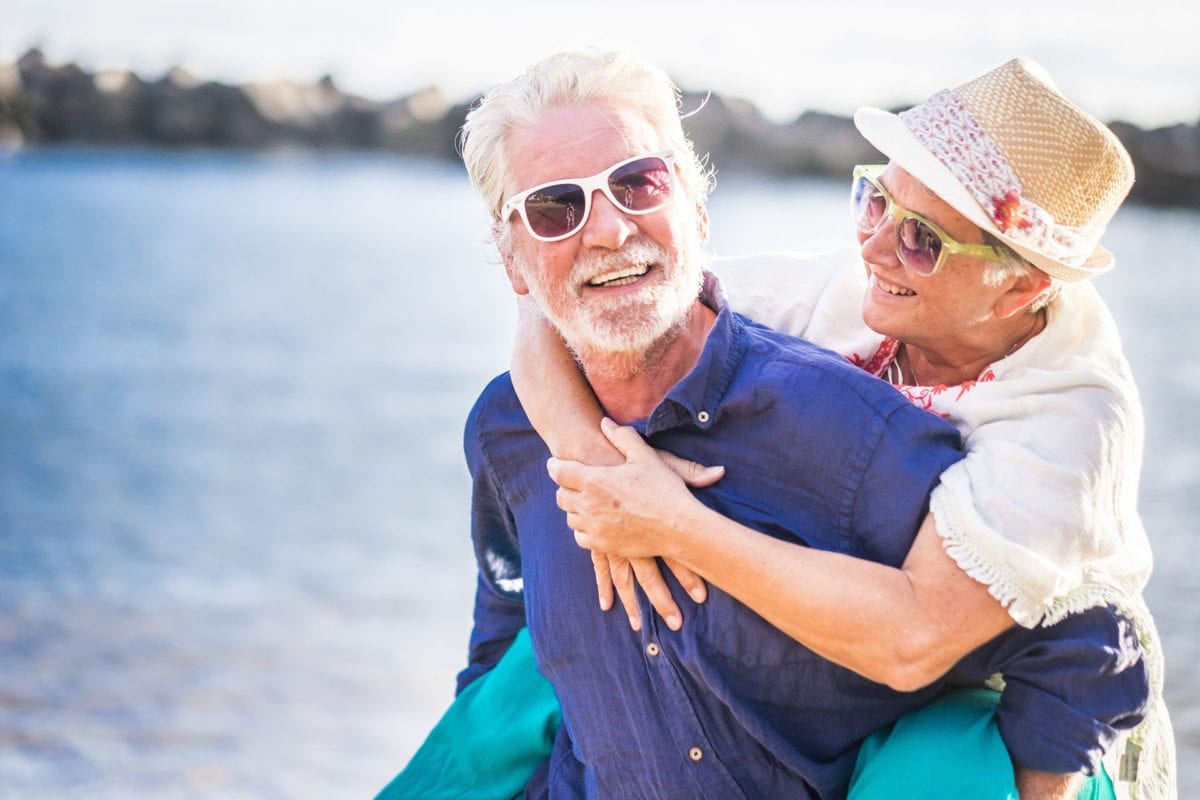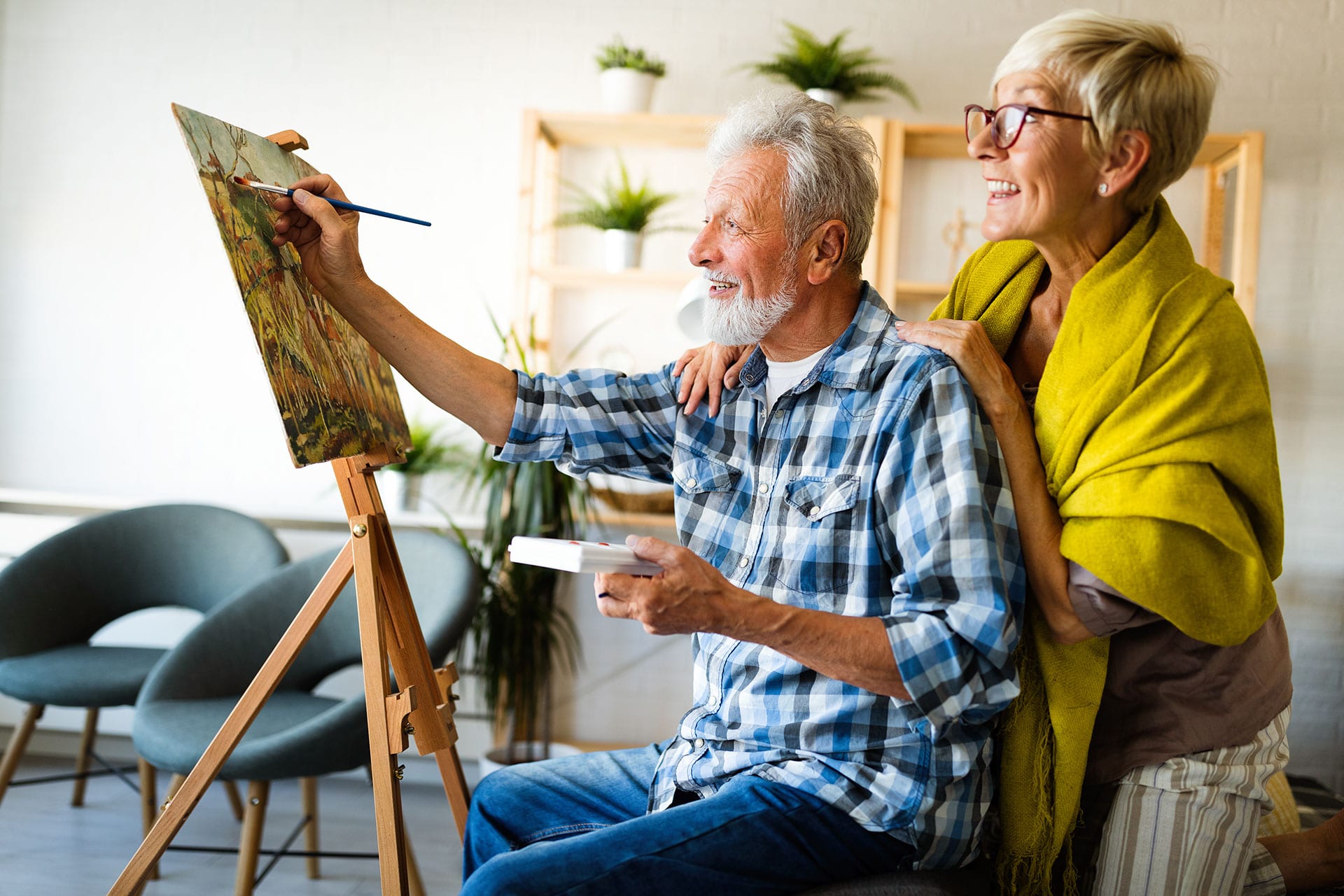Exercise: the Antidote to Aging
Balance and connection make life sweet, and as we begin to age, this truth becomes even more important. Older adults need a unique symmetry of movement, nutrition, community and care to make their golden years some of the best.
One way to address several of these needs at once is to stay active. But what kinds of movement and exercise make sense for those 60 and older?
“In general terms, almost any amount of movement of any type is beneficial as we age.”
“In general terms, almost any amount of movement of any type is beneficial as we age,” says Robert Hauger, an internal medicine physician with Warren Clinic. He encourages aerobic exercise, strength training and balance work, such as yoga or tai chi.
“In general, you want to start exercising slowly and build up your strength,” seconds Gargi Shah, an internal medicine doctor with INTEGRIS. She specifically recommends stationary bicycles for those with knee and back pain, common ailments as we age.
The benefits of exercise are vast and include an increased capability of handling illness, says Hauger, as well as keeping muscle strength longer, says Shah. Be sure to talk to your doctor about your specific health concerns before starting a new exercise regimen.
At Covenant Living at Inverness, a senior living community in Tulsa, residents have myriad fitness choices.
“Multiple levels of classes have been created to maximize the benefit for the residents, who attend based on their current abilities,” says Jana Decker, the community’s director of wellness. “Classes focus on strength, agility, balance, aerobic endurance, flexibility, and are available in water and [on] land.”
The Centers for Disease Control and Prevention recommend adults get 150 minutes per week of moderate exercise or 75 minutes per week of vigorous exercise, but the main goal should be to get some movement in each day, says Hauger.
“But movement is movement, and sometimes just a walk around the block is all somebody can do, and that’s perfectly great and has the health benefits that would be afforded to other, maybe more complex exercise,” he says.

A Well-Rounded Diet
Movement and exercise aren’t the only piece of the puzzle for physical wellness in seniors; nutrition plays a vital component as well.
What does a well-balanced diet look like for an older adult?
“In general, lean meats with a healthy amount of fruits and vegetables,” says Hauger. “Eating more plants is an important thing for all of us to do. Mixing in seeds and nuts and good fats will be beneficial as well.”
Shah continues: “I see a lot of patients with vitamin B12 deficiency and other vitamin deficiencies [when they do] not eat enough vegetables.”
She says that one of the things seniors often lack is eating fresh vegetables and protein, and a balanced diet would go a long way in helping them feel more energetic.
But, like most things, seniors should talk with their doctors about diet changes, as some medical conditions can be affected by the things one eats.
Typically, even with older adults, a balanced diet eliminates the need for nutritional supplements … but there are exceptions to this rule.
“If you’re on a diet that is reasonably balanced, you don’t need a lot of nutritional supplementation in general,” says Hauger. “But there are a few things that we need to be careful about as we age. One is getting enough calcium and vitamin D [which are] are very important in bone development. And many people who are older can’t tolerate some of the foods, for instance dairy products, that are rich in calcium and will have to supplement those with an over-the-counter supplement.”

Mental Health
While the two sides of physical health – diet and exercise – are well-known and acknowledged, addressing mental health concerns are also vitally important to a senior’s ongoing success.
The fact that many older adults are losing their independence, mobility and, oftentimes, their cognitive functions, can play a role in exacerbating mental health concerns, says Jeromy Buchanan, director of aging services with the Oklahoma Department of Human Services.
“Anxiety can become worse – and sometimes, even substance abuse and self-harm in the aging population,” he says. “The best way to promote mental health wellness in seniors is to assure they are getting the care they need, both medically and psychiatrically.”
One great result of ensuring an elderly person is mentally healthy is that it can allow him to continue aging in place, says Buchanan.
Addressing mental health in the aging population is an individual experience, says Nadine Walter, Department of Homeland Security’s Aging Services Programs Administrator. But there are a few simple ways to boost the mood and support healthy minds.
“If they’re staying connected and staying active, then the mental health issues … are going to decrease,” she says.
The Oklahoma Mental Health and Aging Coalition website (omhac.org) can connect seniors and their caregivers to many resources for maintaining good mental health.

The Power of Loneliness
A condition that many seniors face, contributing to mental health concerns, is loneliness. In fact, a University of Michigan National Poll on Healthy Aging found that more than one third of older adults reported that they felt a lack of companionship. And, due to COVID-19 visiting restrictions, these numbers are likely even higher today.
Cultivating and maintaining relationships is the obvious first step in combating loneliness; many older adults find this living in a retirement community.
“Covenant Living at Inverness is a relationship centered community,” says Decker. “Developing and maintaining relationships is a reciprocal act from resident to employee and employee to resident.”
Staying in touch with loved ones while living in a retirement community has proven difficult while visitation is restricted. Many facilities are working hard to keep their residents connected, both virtually and in person … from a distance, of course.
“They’re really trying to embrace different things and be open-minded,” says Walter about seniors’ response to newer technologies. In addition to helping residents stay connected virtually, she mentions how many nursing homes are organizing drive-by birthday parties and for residents to sit outside to watch loved ones come by and wave with signs and banners.
And those older adults living at home by themselves or with a spouse can utilize technology to stay in touch.
“The best interventions are those that involve a rich network of social relationships, whether that’s volunteering, connecting with friends or something else, at least on a weekly basis,” says Buchanan. “During COVID-19, many older adults use video technology like Zoom, Skype or FaceTime to connect with their families and friends.”

Retirement Homes’ Duties to its Residents
Living in some sort of retirement community can be the best way for aging Oklahomans to make their golden years full of connection and health.
When researching homes, Buchanan emphasizes focusing on the resident’s interests and finding a place that offers those specific amenities. Communities offer many above-and-beyond resources including menu dining, individualized activities, access to the outside community, transportation services and a robust social service program, he says.
Leadership at Inverness take their responsibilities and residents’ experience seriously.
“From the beginning, Covenant Living at Inverness was created to be a place people wanted to go; not had to. And it was thoughtfully developed to lend itself to successful and active aging,” says Decker. “From that, the culture organically became one that supports a never-ending pursuit of lifelong learning, engagement and community.”
There are many resources offered through the Oklahoma Department of Human Services Aging Services, including the long-term care ombudsman program, who help improve the quality of life and care available facility residents. Buchanan recommends the ombudsman as a vital resource to answer questions and help with any concerns in making the right choice for long-term care.
“True quality care should be individualized, person-centered and designed to improve a resident’s overall health,” says Buchanan.
Successful and active aging is something we all want for ourselves and for our loved ones. And, while these goals can seem more challenging during a tumultuous year, there are many resources that can help achieve the balance and connection we all need.
























